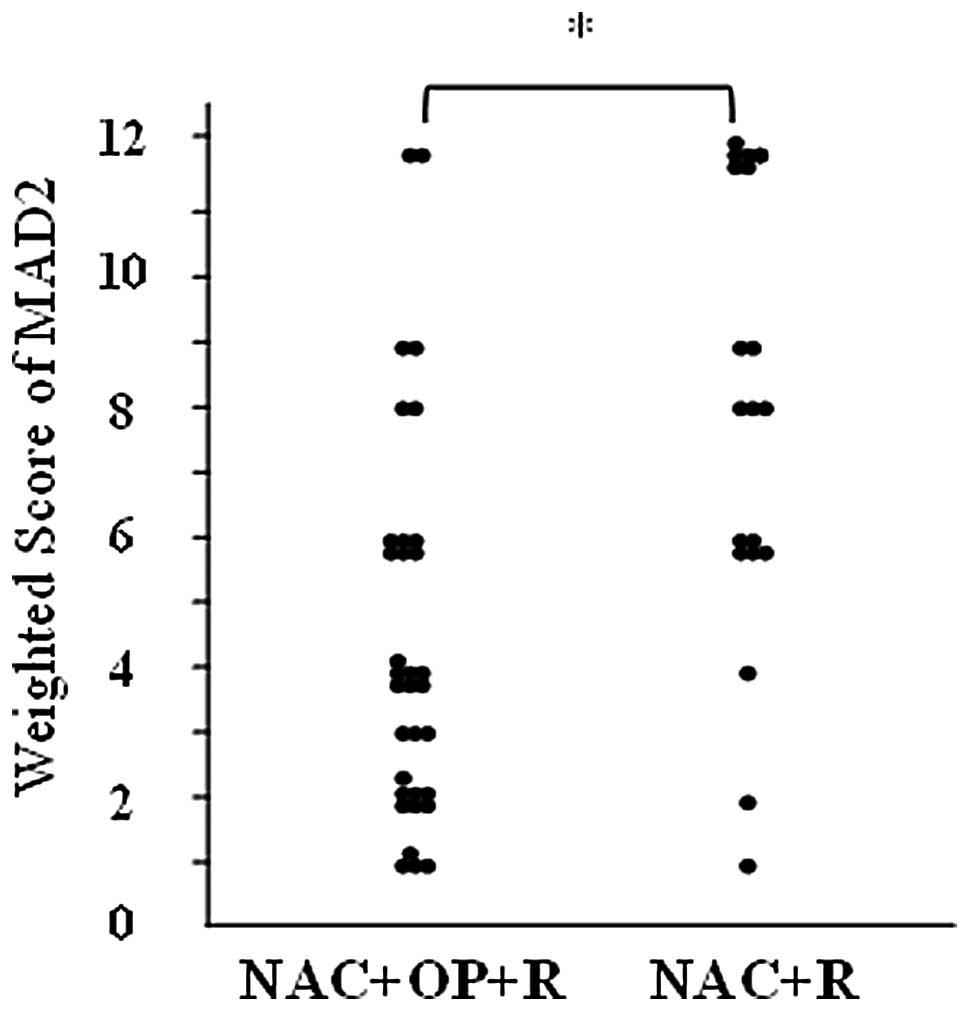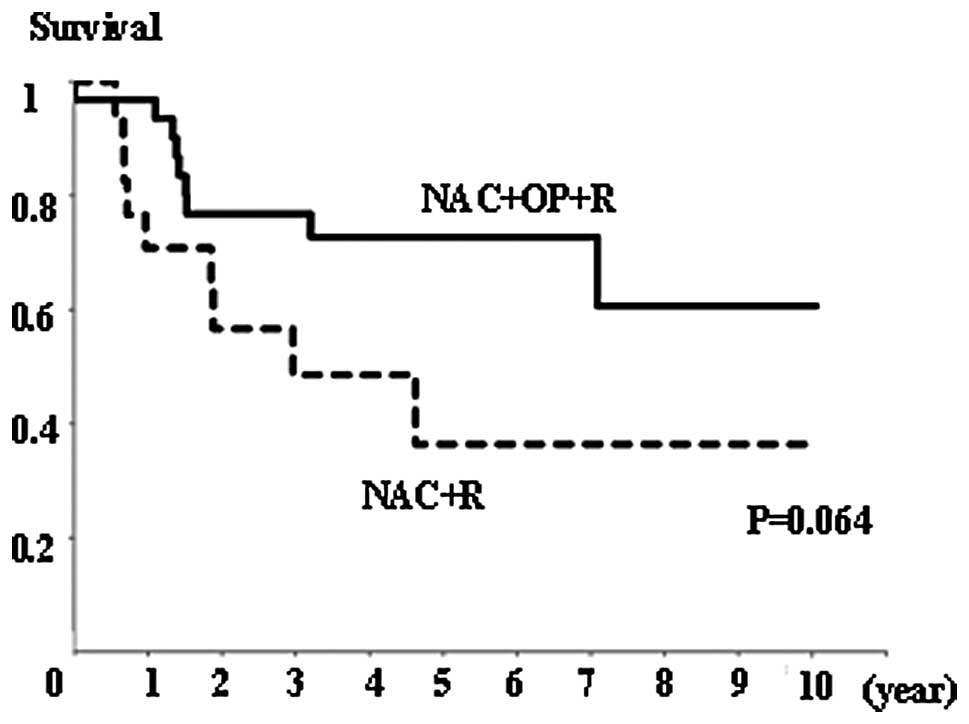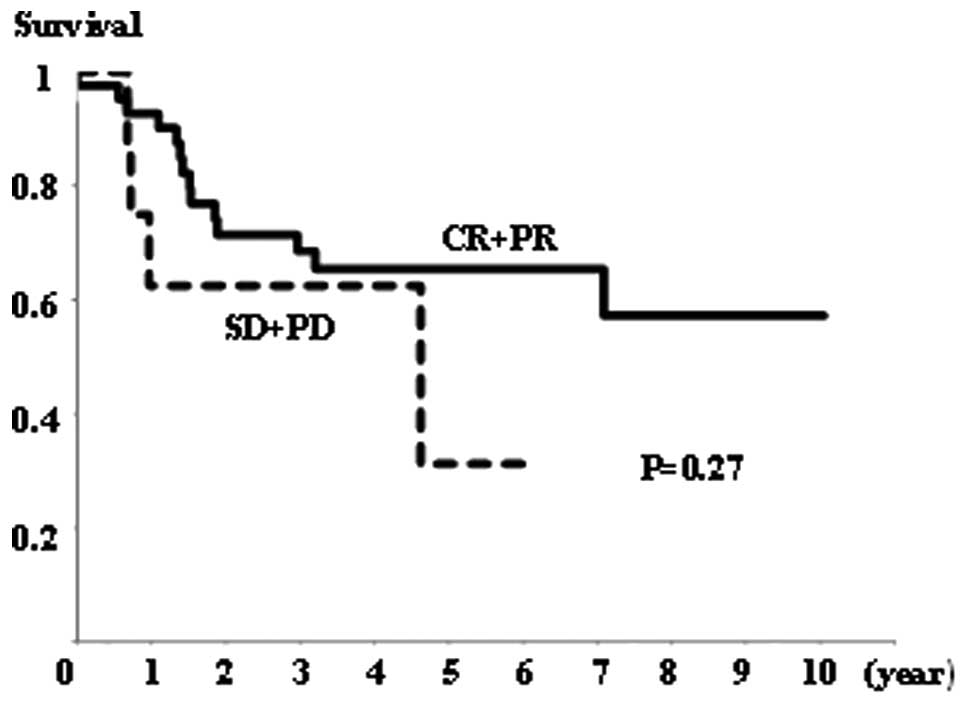|
1.
|
R LiAW MurrayFeedback control of mitosis
in budding
yeastCell66519531199110.1016/0092-8674(81)90015-51651172
|
|
2.
|
Y LiR BenezraIdentification of a human
mitotic checkpoint gene:
hsMAD2Science274246248199610.1126/science.274.5285.2468824189
|
|
3.
|
A Lopez-GironaB FurnariO MondesertP
RussellNuclear localization of Cdc25 is regulated by DNA damage and
a 14–3–3 proteinNature39717217519999923681
|
|
4.
|
X WangDY JinRW NgH FengYC WongAL CheungSW
TsaoSignificance of MAD2 expression to mitotic checkpoint control
in ovarian cancer cellsCancer Res6216621668200211912137
|
|
5.
|
T Orr-WeaverRA WeinbergA checkpoint on the
road to cancerNature392223224199810.1038/325209521314
|
|
6.
|
DS YoonRP WerstoW ZhouFJ ChrestES GarretTK
KwonE GabrielsonVariable levels of chromosomal instability and
mitotic spindle checkpoint defects in breast cancerAm J
Pathol161391397200210.1016/S0002-9440(10)64194-612163363
|
|
7.
|
C LengauerKW KinzlerB VogelsteinGenetic
instability in colorectal
cancersNature386623627199710.1038/386623a09121588
|
|
8.
|
C LengauerKW KinzlerB VogelsteinGenetic
instability in human
cancersNature396643649199810.1038/252929872311
|
|
9.
|
R SotilloE HernandoE Diaz-RodriguezJ
Teruya-FeldsteinC Cordon-CardoSW LoweR BenezraMad2 overexpression
promotes aneuploidy and tumorigenesis in miceCancer
Cell11923200710.1016/j.ccr.2006.10.01917189715
|
|
10.
|
AA AlizadehMB EisenRE DavisC MaIS LossosA
RosenwaldJC BoldrickH SabetT TranX YuDistinct types of diffuse
large B-cell lymphoma identified by gene expression
profilingNature403503511200010.1038/3500050110676951
|
|
11.
|
X ChenST CheungS SoST FanC BarryJ
HigginsKM LaiJ JiS DudoitIO NgM Van De RijnD BotsteinPO Browngene
expression patterns in human liver cancersMol Biol
Cell1319291939200210.1091/mbc.02-02-0023.12058060
|
|
12.
|
ME GarberOG TroyanskayaK SchluensS
PetersenZ ThaeslerM Pacyna-GengelbachM Van de RijnGD RosenCM
PerouRI WhyteDiversity of gene expression in adenocarcinoma of the
lungProc Natl Acad Sci
USA981378413789200110.1073/pnas.24150079811707590
|
|
13.
|
GQ LiH LiHF ZhangMad2 and p53 expression
profiles in colorectal cancer and its clinical significanceWorld J
Gastroenterol919721975200312970887
|
|
14.
|
GQ LiHF ZhangMad2 and p27 expression
profiles in colorectal cancer and its clinical significanceWorld J
Gastroenterol1032183220200415457580
|
|
15.
|
SH ZhangAM XuXF ChenDH LiMP SunYJ
WangClinicopathologic significance of mitotic arrest defective
protein2 overexpression in hepatocellular carcinomaHum
Pathol3918271834200810.1016/j.humpath.2008.06.00318715617
|
|
16.
|
L WangF YinY DuW DuB ChenY ZhangK WuJ
DingJ LiuD FanMAD2 as a key component of mitotic checkpoint: A
probable prognostic factor for gastric cancerAm J Clin
Pathol131793801200910.1309/AJCPBMHHD0HFCY8W19461085
|
|
17.
|
K TanakaJ NishiokaK KatoA NakamuraT MouriC
MikiM KusunokiT NoboriMitotic checkpoint protein hsMAD2 as a marker
predicting liver metastasis of human gastric cancerJpn J Cancer
Res92952958200110.1111/j.1349-7006.2001.tb01186.x
|
|
18.
|
L YuWC GuoSH ZhaoJ TangJL ChenMitotic
arrest defective protein 2 expression abnormality and its
clinicopathologic significance in human
osteosarcomaAPMS118222229201010.1111/j.1600-0463.2009.02583.x20132188
|
|
19.
|
CW WuCW ChiTS HuangElevated level of
spindle checkprotein MAD2 correlates with cellular mitotic arrest,
but not with aneuploidy and clinicopathological characteristics in
gastric cancerWorld J gastroenterol1032403244200415484292
|
|
20.
|
R SotilloJM SchvartzmanND SocciR
BeneztraMad2-induced chromosome instability leads to lung tumor
relapse after oncogene
withdrawalNature464436440201010.1038/nature0880320173739
|
|
21.
|
X WangDY JinYC WongAL CheungAC ChunAK LoY
LiuSW TsaoCorrelation of defective mitotic checkpoint with
aberrantly reduced expression of MAD2 protein in nasopharyngeal
carcinoma
cellsCarcinogenesis1222932297200010.1093/carcin/21.12.229311133821
|
|
22.
|
MK FungHW CheungMT LingAL CheungYC WongX
WangRole of MEK/ERK pathway in the MAD2-mediated cisplatin
sensitivity in testicular germ cell tumour cellsBr J
Cancer95475484200610.1038/sj.bjc.660328416880791
|
|
23.
|
HW CheungAC ChunQ WangW DengL HuXY GuanJM
NichollsMT LingY Chuan WongSW TsaoDY JinX WangInactivation of human
MAD2B in nasopharyngeal carcinoma cells leads to chemosensitization
to DNA-damaging agentsCancer
Res6643574367200610.1158/0008-5472.CAN-05-360216618761
|
|
24.
|
Japan Society of Gynecologic
OncologyFormulation Committee of the Treatment Guidelines for
Cervical Cancer2007
|
|
25.
|
National Comprehensive Cancer NetworkNCCN
Clinical Practice Guidelines in Oncology - Cervical Cancer -
Version I2012
|
|
26.
|
M MorrisPJ EifelJ LuPW GrigsbyC
LevenbackRE StevensM RotmanDM GershensonDG MutchPelvic radiation
with concurrent chemotherapy compared with pelvic and para-aortic
radiation for high-risk cervical cancerN Engl J
Med34011371143199910.1056/NEJM19990415340150110202164
|
|
27.
|
PJ EifelK WinterM MorrisC LevenbackPW
GrigsbyJ CooperM RotmanD GershensonDG MutchPelvic irradiation with
concurrent chemotherapy versus pelvic and para-aortic irradiation
for high-risk cervical cancer: an update of radiation therapy
oncology group trial (RTOG) 90-01J Clin
Oncol22872880200410.1200/JCO.2004.07.19714990643
|
|
28.
|
O IshikoT SumiT YasuiY MatsumotoN
KawamuraS OgitaT KaminoK NakamuraR YamadaBalloon-occluded arterial
infusion chemotherapy, simple total hysterectomy, and radiotherapy
as a useful combination-therapy for advanced cancer of the uterine
cervixOncol Rep71411442000
|
|
29.
|
JE SardiA GiaroliCE SananesN Gomez RuedaS
VighiM FerreiraML BastardasG PaniceresG Di PaolaRandomized trial
with neoadjuvant in stage IIIB squamous carcinoma cervix uteri: an
unexpected therapeutic managementInt J Gynecol
Cancer68593199610.1046/j.1525-1438.1996.06020085.x
|
|
30.
|
L SouhamiRA GilSE AllanPC CanaryCM
AraújoLH PintoTR SilveriaA randomized trial of chemotherapy
followed by pelvic radiation therapy in stage IIIB carcinoma of the
cervixJ Clin Oncol997097719911709686
|
|
31.
|
MH TattersallV LorvidhayaV VootipruxA
CheirsilpaF WongT AzharHP LeeSB KangA ManaloMS YenRandomized trial
of epirubicin and cisplatin chemotherapy followed by pelvic
radiation in locally advanced cervical cancer. Cervical Cancer
Study Group of the Asian Oceanian Clinical Oncology AssociationJ
Clin Oncol134444511995
|
|
32.
|
O IshikoT SumiT YasuiY MatsumotoS OgitaT
KaminouK NakamuraR YamadaTumor marker and MR imaging criteria for
evaluating the efficacy of cyclic balloon-occluded arterial
infusion for advanced cancer of the uterine cervixOncol
Rep4827830200010854552
|
|
33.
|
O IshikoT SumiH YoshidaS OgitaR
YamadaExpression of apoptosis regulatory proteins in advanced
cancer of the uterine cervix after cyclic balloon-occluded arterial
infusion chemotherapyInt J Oncol6115111552001
|
|
34.
|
H NobeyamaT SumiF MisugiE OkamotoK
HattoriY MatsumotoT YasuiK HondaK IwaiO IshikoAssociation of HPV
infection with prognosis after neoadjuvant chemotherapy in advanced
uterine cervical cancerInt J Mol Med1101105200415202023
|
|
35.
|
E OkamotoT SumiF MisugiH NobeyamaK
HattoriH YoshidaY MatsumotoT YasuiK HondaO IshikoExpression of
apoptosis-related proteins in advanced uterine cervical cancer
after balloon-occluded arterial infusion chemotherapy as an
indicator of the efficiency of this therapyInt J Mol
Med141472005
|
|
36.
|
K TsujiR YamadaM KawabataK MitsuzaneM
SatoM IwahashiS KitayamaR NakanoEffect of balloon occluded arterial
infusion of anticancer drugs on the prognosis of cervical cancer
treated with radiation therapyInt J Radiat Oncol Biol
Phys3213371345199510.1016/0360-3016(94)00651-Z7635773
|
|
37.
|
S SironiC BelloniG TaccagniA Del
MaschioInvasive cervical carcinoma: MR imaging after prospective
chemotherapyRadiology180719722199110.1148/radiology.180.3.18712831871283
|
|
38.
|
KH KimBH LeeYS DoSY ChinBG KimStage IIb
cervical carcinoma: MR evaluation of intraarterial
chemotherapyRadiology1926165199410.1148/radiology.192.1.82089678208967
|
|
39.
|
FA SinicropeSB RuanKR ClearyLC StephensJJ
LeeB LevinBcl-2 and p53 oncoprotein expression during colorectal
tumorigenesisCancer Res5523724119957812951
|















